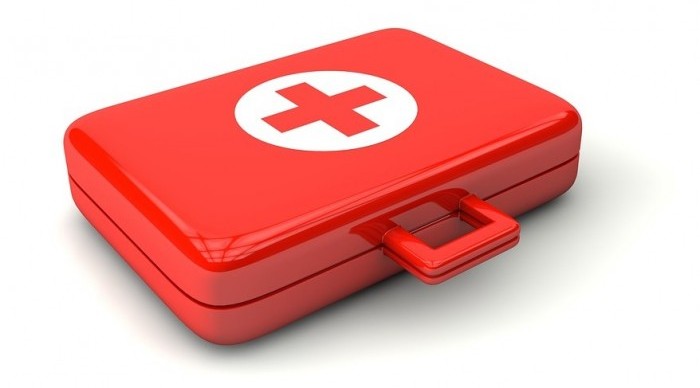As an employer, it is your responsibility to protect the health and safety of your staff. You have a legal obligation to ensure that your workers and other people who come into contact with your business are protected from anything that could cause injury or harm. Under health and safety laws, there are certain measures that every employer should have in place in the workplace. Here’s our checklist of the essentials:
 First aid kit: This is a must in any workplace. Ensure that employees know where the first aid kit is located and include a leaflet in the kit giving general advice on first aid. While not mandatory, as a minimum the items should include sterile plasters of assorted sizes (plus hypo-allergenic if necessary), sterile eye pads, individually wrapped bandages, safety pins, dressings and disposable gloves to prevent against cross-contamination. For these and more medical supplies there is a great range at Brosch Direct.
First aid kit: This is a must in any workplace. Ensure that employees know where the first aid kit is located and include a leaflet in the kit giving general advice on first aid. While not mandatory, as a minimum the items should include sterile plasters of assorted sizes (plus hypo-allergenic if necessary), sterile eye pads, individually wrapped bandages, safety pins, dressings and disposable gloves to prevent against cross-contamination. For these and more medical supplies there is a great range at Brosch Direct.
First aider or ‘appointed person’: It is vital that there is someone in the workplace who is responsible for first aid arrangements. In some workplaces, a needs assessment may show a first aider is not necessary. This is where, as a minimum requirement, you must have an ‘appointed person’ to look after the first aid equipment, facilities and call the emergency services when required. First aiders should have completed the required level of training for the workplace with a nationally recognised and regulated qualification. The number of first aiders required will depend on the size of your business, risks and needs.
Risk assessments: Employers have a duty under health and safety law to assess risks in the workplace. You should carry out risk assessments to address all risks that might cause harm in your workplace and the steps you have taken to manage them.

Employee information: You must ensure that your staff are given information about risks in your workplace and how they are protected. There is a legal duty under the Health and Safety Information for Employees Regulations (HSIER) to display the approved poster in a prominent position in the workplace which outlines British health and safety law, or staff must all be given the approved leaflet called ‘Health and safety law: What you need to know.’
Training: Employees must all be given proper instruction and training on how to deal with risks. They must also understand that they can consult you on health and safety issues. You should inform them whether this can be done directly or appoint a safety representative who is either elected by the workforce or appointed by a trade union.
Accident and incident book: Accidents must be recorded as part of your management of health and safety. Certain accidents and injuries at work must be reported and recorded under the Reporting of Injuries, Disease and Dangerous Occurrences Regulations (RIDDOR). It is also good practice to provide first-aiders and appointed persons with a book in which to record incidents that they attend. This can be used for reference in future assessments and to identify any trends and areas for improvements in the control of health and safety risks.
Find a Home-Based Business to Start-Up >>> Hundreds of Business Listings.













































